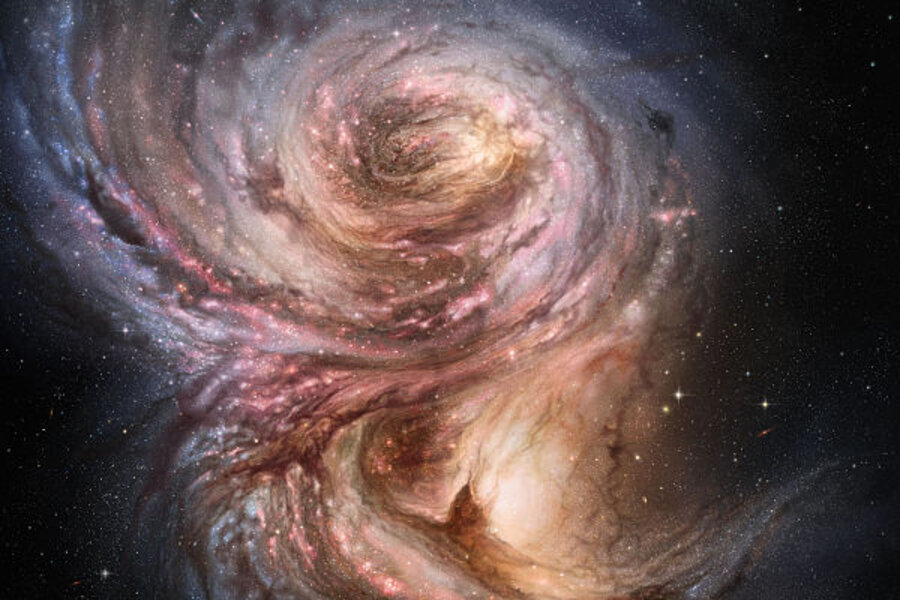Stunning views of star birth in a distant galaxy
A galaxy some 10 billion light years from Earth is – or was – producing stars at a prodigious rate. And Albert Einstein's gravitational "magnifying glass" has been giving astronomer's a front-row seat.
The galaxy in question: SMMJ2135-0102. It came to light as an international team of astronomers was observing a vast cluster of galaxies roughly 4.5 billion light years away. Their data revealed a very bright galaxy that appeared to be adjacent to the cluster. It was a galaxy no one had observed before.
The team measured the new galaxy's red-shift, a trait astronomers can use to estimate distance. Members were stunned to find the galaxy was more than twice as far away as the cluster they were studying. In effect, they were observing a galaxy in the form it had only about 3.5 billion years after the Big Bang, which formed the observable universe.
As Eintein's theory of general relativity predicted, the cluster's enormous gravity was bending light from the new galaxy behind it, turning the cluster into a vast magnifying glass. The lensing is strong enough to boost the apparent size of the new galaxy some 32 times.
The galaxy already was intrinsically bright because of the high rate at which new stars were forming in it. With magnification, the galaxy appeared brighter still.
"The magnification reveals the galaxy in unprecedented detail," notes Mark Swinbank, an astronomer at the University of Durham in Britain and a member of the team making the discovery.
The initial discovery was made with a European-run submillimeter telescope in Chile's Atacama desert. Follow-up observations at submillimeter wavelengths have allowed the team to study three large regions where vast clouds of dust and gas are acting as nurseries for new stars. Gravitational lensing, combined with the resolving power of the Harvard-Smithsonian Center for Astrophysics' submillimeter array on Hawaii's Mauna Kea volcano, is revealing clouds a few hundred light years across – comparable in size to large clouds in the Milky Way.
Although the star forming regions the team has observed are about as large as those in the Milky Way, they are 100 times brighter, reinforcing the notion that star formation back then was far more vigorous than it is today.
Team member Steven Longmore, with the Harvard-Smithsonian Center for Astrophysics in Cambridge, Mass., notes that more of these galaxies are likely to show up as astronomers conduct surveys of large regions of the night sky.
Studying additional galactic teenagers "will allow us to test exactly how generic our results are: Is the star formation occurring within galaxies in the early Universe always so vigorous? Or are we catching this particular galaxy at a very special time?" he said in a statement.
The team's results appear in the current issue of the journal Nature.





